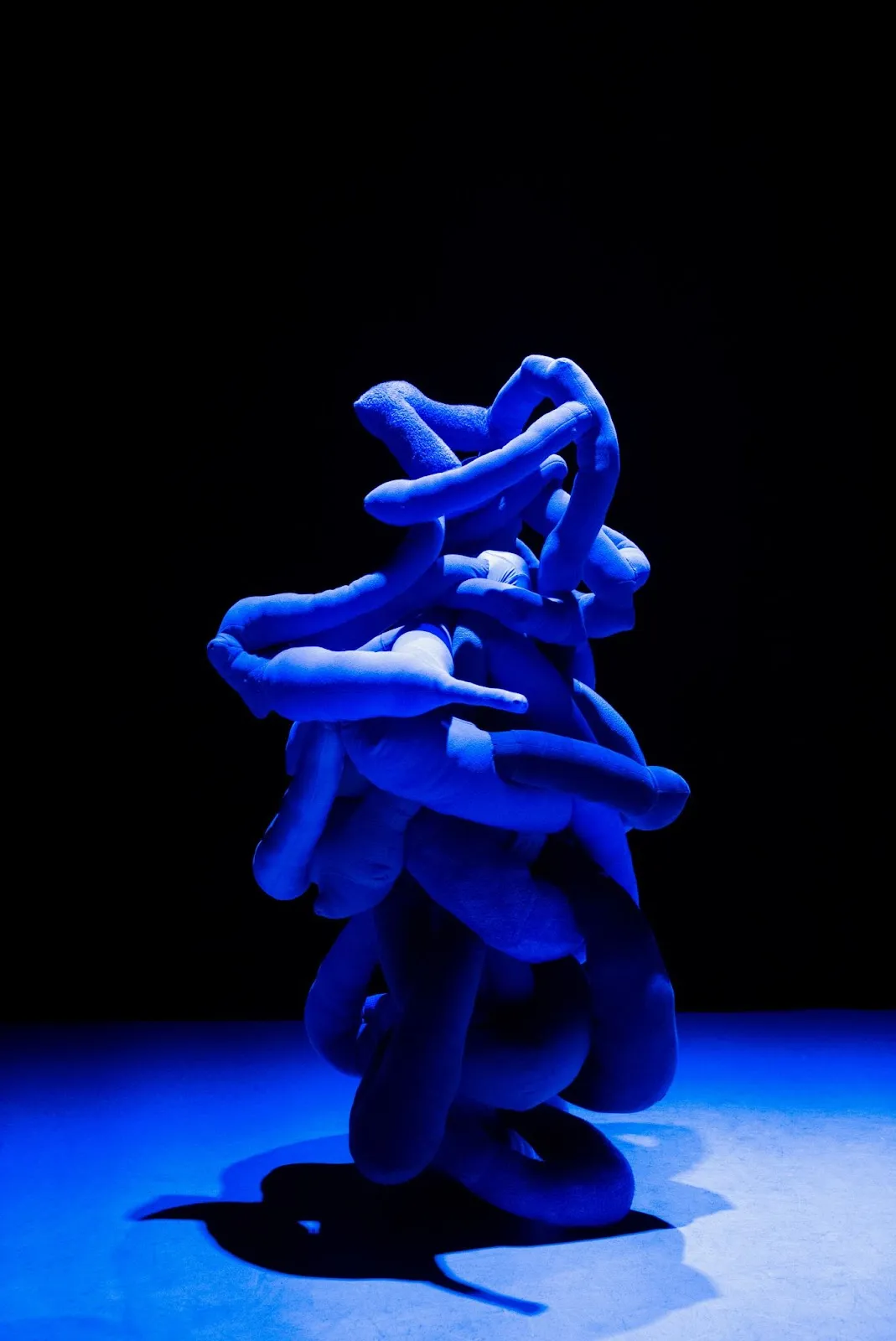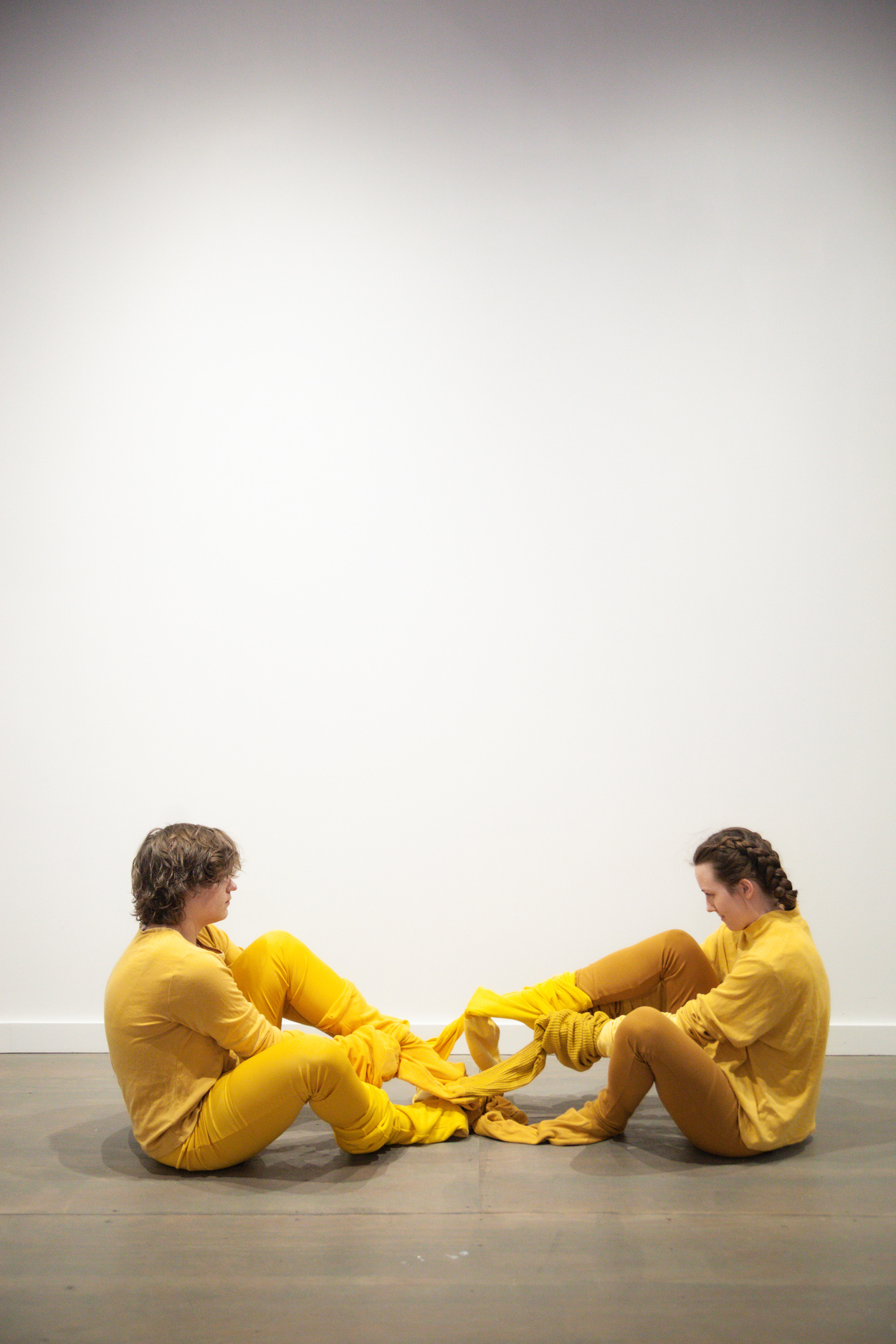I Resist This from March 4th to April 6th, 2024 at The Stamp Gallery | University of Maryland, College Park | Written by Rachel Schmid-James
Visual art has become an individualistic art form over the last few hundred years, but it has not always been this way. Before it was considered an independent task, it was a way to bind communities together. Art has always been a part of humanity, and from the very start it has been a group project. Some of the first examples we have of humans creating art are cave paintings created thousands of years ago. These simple paintings involved everybody in the community; even the youngest children would be lifted to the ceiling to add their handprints to the walls. However, at some point down the line, industrialization in the Western world made us pull away from communal values in search of individualism. This dichotomy can be seen in soft sculptor and performance artist Charlotte Richardson-Deppe’s work: independence and togetherness have their own positive and negative aspects. She uses her performances to explore the idea of community; asking us why we are all so afraid to ask for help, and why we are so desperate to break away from each other in the first place.

Richardson-Deppe discusses this concept in an interview with writer Charlee Dryoff as it relates to her past, present, and future projects. In her sister works titled Yellow and Blue, these struggles are front and center. In Yellow, two performers twist together in a multi-person bodysuit that attaches them at their arms and legs. While they can still move their torsos and heads freely, they have to work together to walk, fighting against each other as they do so. In contrast, Blue costumes a single person who is enrobed in ropes of blue fabric. While they are protected from the outside world and the tensions which appear in Yellow, the wearer is completely isolated and restricted by the garment. Richardson-Deppe explains that these two works are meant to represent that “both connection and loneliness have benefits and hardships.” One must sometimes choose whether to be safe from stress and tension with others but be totally alone, or to be with others and struggle to win back the independence that society has told us to crave. As seen in examples such as the cave paintings, humans are communal creatures that are meant to lean on each other for help and support. This does not mean that the struggle for independence is not valid, but it does make you question why you want independence so badly in the first place. Richardson-Deppe shows that she also struggles with these concepts, but says that she is challenging them through the simple act of asking for help. “Asking for help is profound, vulnerable, necessary, and we all should be doing it more often,” Richardson-Deppe says. “It is also reciprocal—I will help you hang your exhibition, and you will help me film my performance. I will carry your sculpture and you will proofread my application.” As in Yellow and Blue, her new performance I Resist This, which will be performed at the Stamp Gallery on April 6, shows the value of asking. The final performance will include multiple performers all attached by the same soft sculpture. They will have to rely on each other and help pull one another, but their tension and resistance will make it difficult to do this. It is hard to accept support when everything around us suggests weakness, but Richardson-Deppe asks the audience to think deeper and take that first step towards a more supportive way of being.

Charlotte Richardson-Deppe’s work is included in I Resist This at The Stamp Gallery of the University of Maryland, College Park, from March 4th to April 6th, 2024. Richardson-Deppe end her artist residency with a performance of I Resist This on April 6th, 2024 at 7pm. For more information on Richardson-Deppe, visit https://www.charlotte-rd.com/. For more information on I Resist This and related events, visit https://stamp.umd.edu/centers/stamp_gallery.























